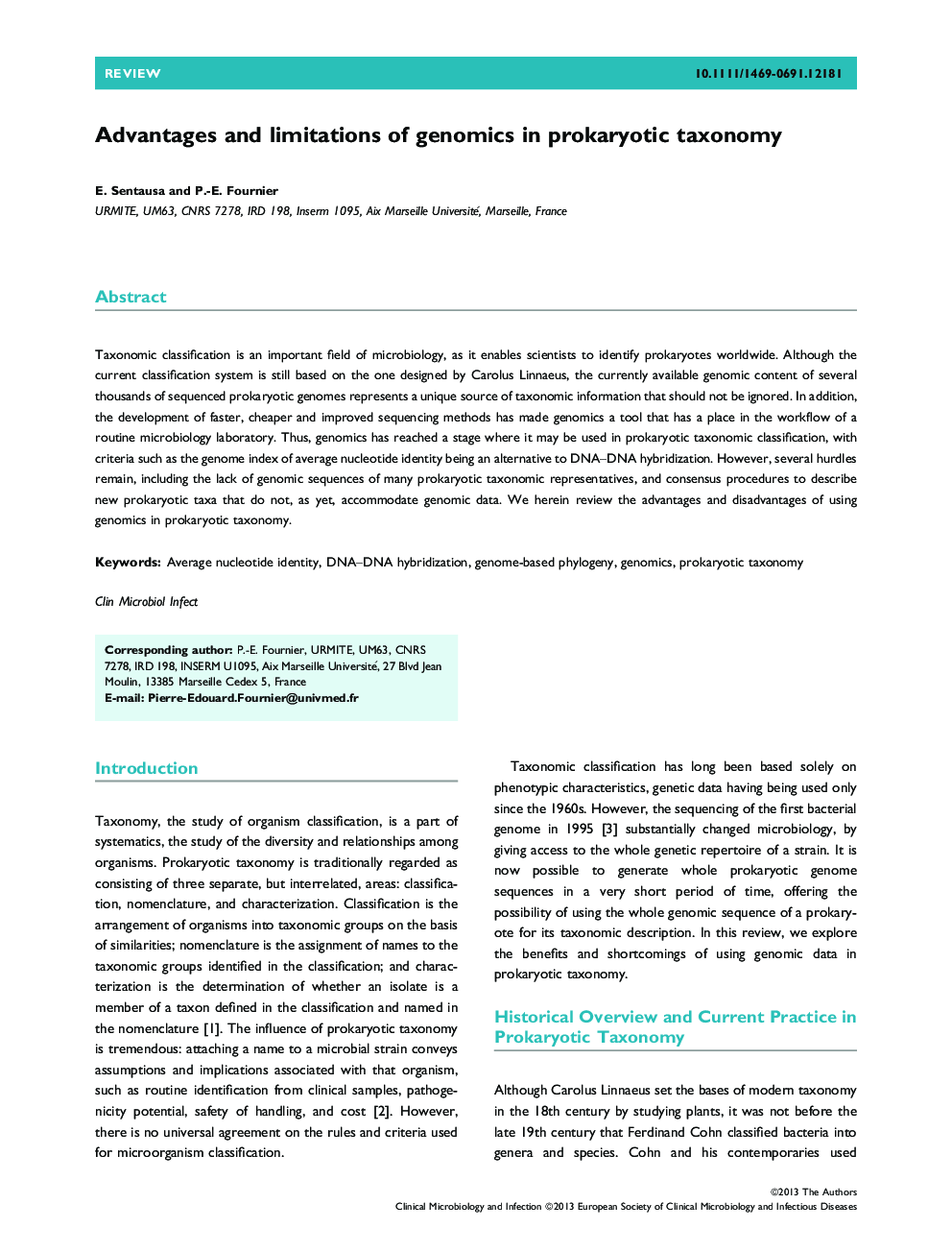| Article ID | Journal | Published Year | Pages | File Type |
|---|---|---|---|---|
| 6130580 | Clinical Microbiology and Infection | 2013 | 6 Pages |
Abstract
Taxonomic classification is an important field of microbiology, as it enables scientists to identify prokaryotes worldwide. Although the current classification system is still based on the one designed by Carolus Linnaeus, the currently available genomic content of several thousands of sequenced prokaryotic genomes represents a unique source of taxonomic information that should not be ignored. In addition, the development of faster, cheaper and improved sequencing methods has made genomics a tool that has a place in the workflow of a routine microbiology laboratory. Thus, genomics has reached a stage where it may be used in prokaryotic taxonomic classification, with criteria such as the genome index of average nucleotide identity being an alternative to DNA-DNA hybridization. However, several hurdles remain, including the lack of genomic sequences of many prokaryotic taxonomic representatives, and consensus procedures to describe new prokaryotic taxa that do not, as yet, accommodate genomic data. We herein review the advantages and disadvantages of using genomics in prokaryotic taxonomy.
Related Topics
Life Sciences
Immunology and Microbiology
Microbiology
Authors
E. Sentausa, P.-E. Fournier,
